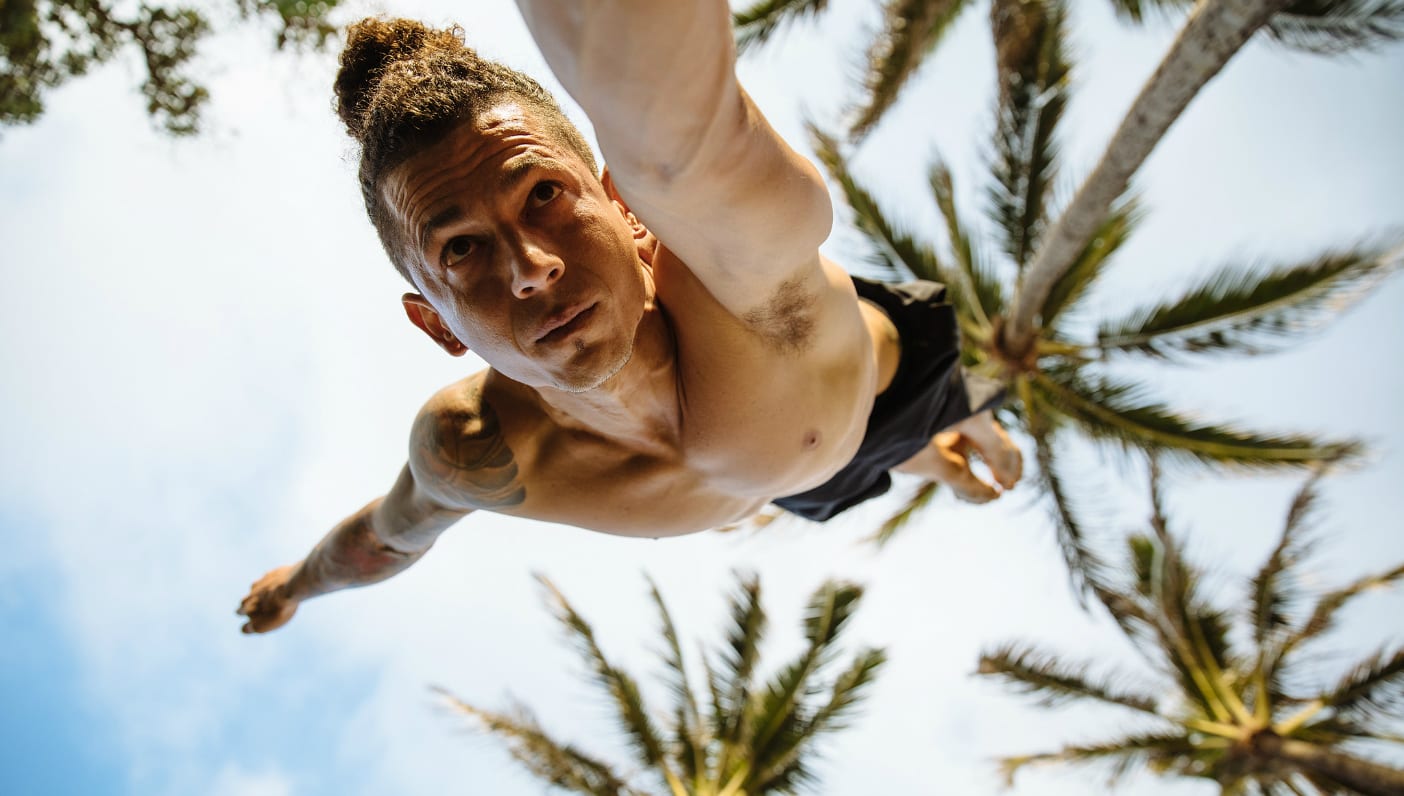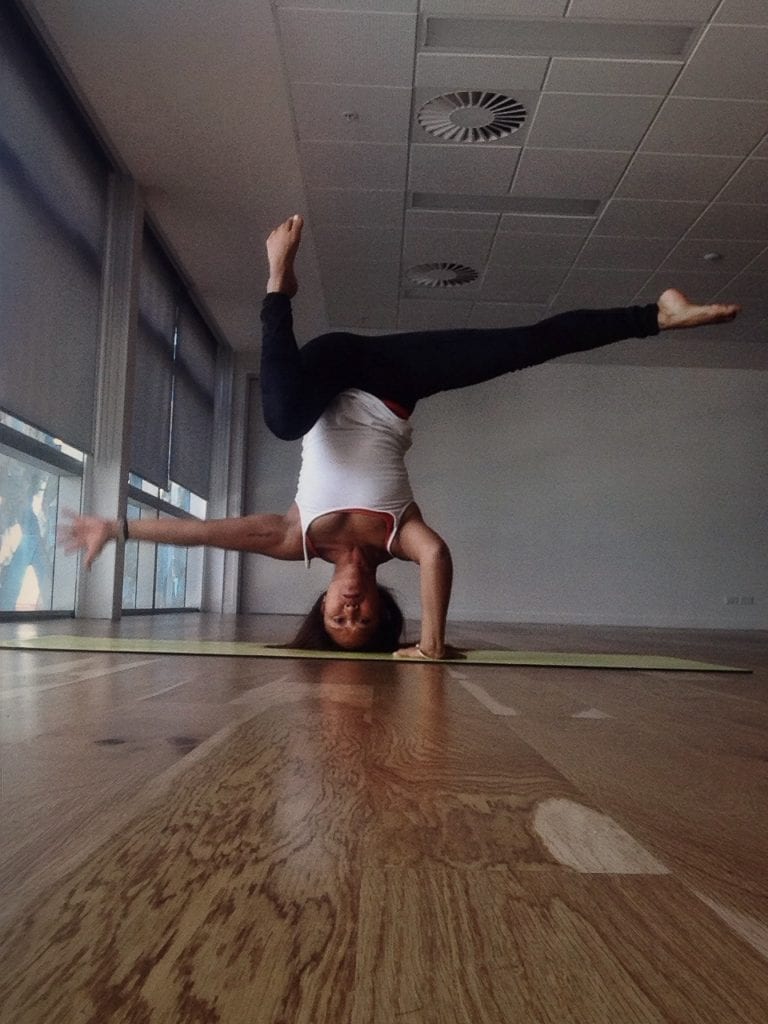
Practice inversions with Briohny Smyth‘s or Chelsey Korus‘s class packs on Wanderlust TV.
Most assume that inversions and arm balances are about strength. Yet the delicate balance between weight distribution and structure of the pose can throw the super strong off their game. Disillusioned or ambitious but unmindful practitioners try to forcefully conquer the posture, while an unsuspecting yogi flies through said inversion with ease; the rest of us look on in admiration or anxiety over whether to give it a go.
For some, the thought of balancing on their heads or hands seems scary and beyond their ability. Many dismiss the possibility of inversions and arm balances due to doubt, fear, and lack of strength. The mind starts to chatter all its apprehensions.
Yes, inversions are a mind trip and can be fertile ground to observe your tendencies and attitudes toward approaching something that’s desirable but difficult. We have to question why do we want to do it and what purpose it serves.
Why Practice Inversions?
Aside from the more physical muscular benefits, inversions are believed to improve brain function, release neurotransmitters, balance hormones, and release endorphins.
Dr. Karen Koffler, medical director of Canyon Ranch Miami and formerly director of Integrative Medicine at Evanston Northwestern Hospital, explains the benefits of these inversions for the brain:
Inverted positions that are assumed in yoga alter the blood flow (including lymphatic drainage) and flow of cerebral spinal fluid (CSF). If there is increased blood flow to the area, there will be increased bioavailability of oxygen and glucose—the two most important metabolic substrates for the brain. It follows then that cells bathed in a solution that is rich in factors required for the creation of neurotransmitters (like norepinephrine, dopamine, and serotonin) will be better able to produce these chemicals.
However, it’s the emotional and psychological journey that makes inversion practice so valuable and enriching. In fact, it is not uncommon to feel immediately uplifted after an inversion. These positive effects can provide an alternative way to counteract mental health challenges, such as SAD (Seasonal Affective Disorder).
Psychologically, inversions and arm balances can break down some personal barriers. When we approach this type of practice we realize that it is consistent mindful dedication without ambition and an open, welcoming attitude toward the teacher and assistance that is the secret to a successful inversion pose.
Inversions can also help develop patience, focus, and listening skills. If information is received positively, familiarity will soften fear enough to be acknowledged and subside. This work through the asana—whether physically, visually, or energetically, even at the preparatory work stage (just as beneficial and easily accommodating)—is great stimulation for the mind.
During inversion prep work we are reminded how to stay curious and courageous. The mind enters the body awareness more acutely. The trust and openness of a yogi’s attitude develops problem solving skills, while exploring the body’s boundaries, capabilities, and discoveries. Executing the final asana becomes less important. The real yoga has already begun.
Yogis are often surprised by how much they can achieve and uncover about themselves through the process. The impossible starts to seem more attainable. A sense of accomplishment that follows can lift spirits to new heights and bring fresh confidence and motivation into everyday existence. But If a desired result is not reached, learning acceptance can foster self-love as well. Inversion practice serves as a catalyst for personal growth.
5 Inversions to Try
Crow (Bakasana)
As one of the first inversions to learn, crow pose is a great intro to the concept of balance, weight shifting, trust, and knowing that it’s not about the strength. It’s easy to transition from the prep work (rocking back and forth from feet to hands) to the full expression of the posture of balancing on the hands.
Bakasana, like a lot of postures, can conjure up a lot of fear issues. With patience, care, and trust, a yogi can work toward overcoming these issues and start to feel more open and liberated as you progress in the pose.
From crow there are myriad similar alignment arm balances one can work on. Or try gently shifting the weight more forward to a headstand.
Headstand (Shirshasana)
Inversions by nature usually place the heart higher than the head, improving blood circulation. This boost to the nervous and endocrine systems produces an uplifting, rejuvenating effect. Shirshasana cultivates spacial awareness, concentration, and focus needed to come into and out of the posture.
From here you could choose to transition back to Bakasana or jump back into Chaturanga Dandasana.
Downward Dog (Adho Mukha Svanasana)
Is the most well-known yoga posture that happens to be an inversion! In the beginning, downward dog can be difficult and stressful to manage, but in time it becomes a resting position. It’s a mental challenge—either you are cursing or loving it.
Shoulder Stand (Salamba Sarvangasana)
This is a lovely, popular posture that most can enjoy. Feelings of weightlessness and wonder can inspire the inner child in all of us to play. Shoulder stand supports positive improvement on mood and encourages contentment.
Legs Up the Wall (Viparita Karani)
This restorative and gentle anti-aging posture promotes peacefulness and satisfaction. As the nervous system is soothed, the mind is relaxed. Viparita Karani is a welcome asana after a hard class or long day at work.
Sources:
Robert M Martin, M.D., The Gravity Guidance System: Turning the Aging Process Upside Down, Gravity Guidance Inc., Pasadena, CA, 1982
Mel Robin, PhD, A Physiological Handbook for Teachers of Yogasana, Fenstra Books, Tuscon, AZ, 2002
Amy Weintraub, Yoga for Depression: A Compassionate Guide to Relieve Suffering Through Yoga, Broadway Books, 2004
—
 Stacy Lee Ghin is a Canadian 200 RYT vinyasa flow teacher living in New Zealand that divides her time between being a mom and professionally doing hair and makeup on fashion shoots. A lover of all things beautiful and magical, she enjoys sharing her knowledge and discoveries on her website and Instagram.
Stacy Lee Ghin is a Canadian 200 RYT vinyasa flow teacher living in New Zealand that divides her time between being a mom and professionally doing hair and makeup on fashion shoots. A lover of all things beautiful and magical, she enjoys sharing her knowledge and discoveries on her website and Instagram.
